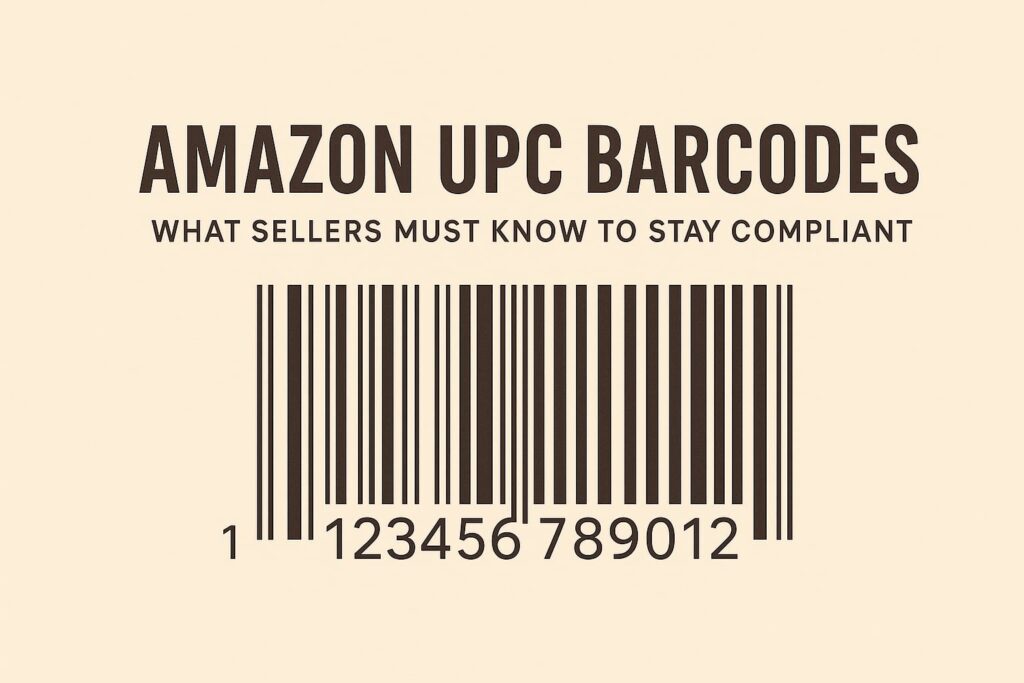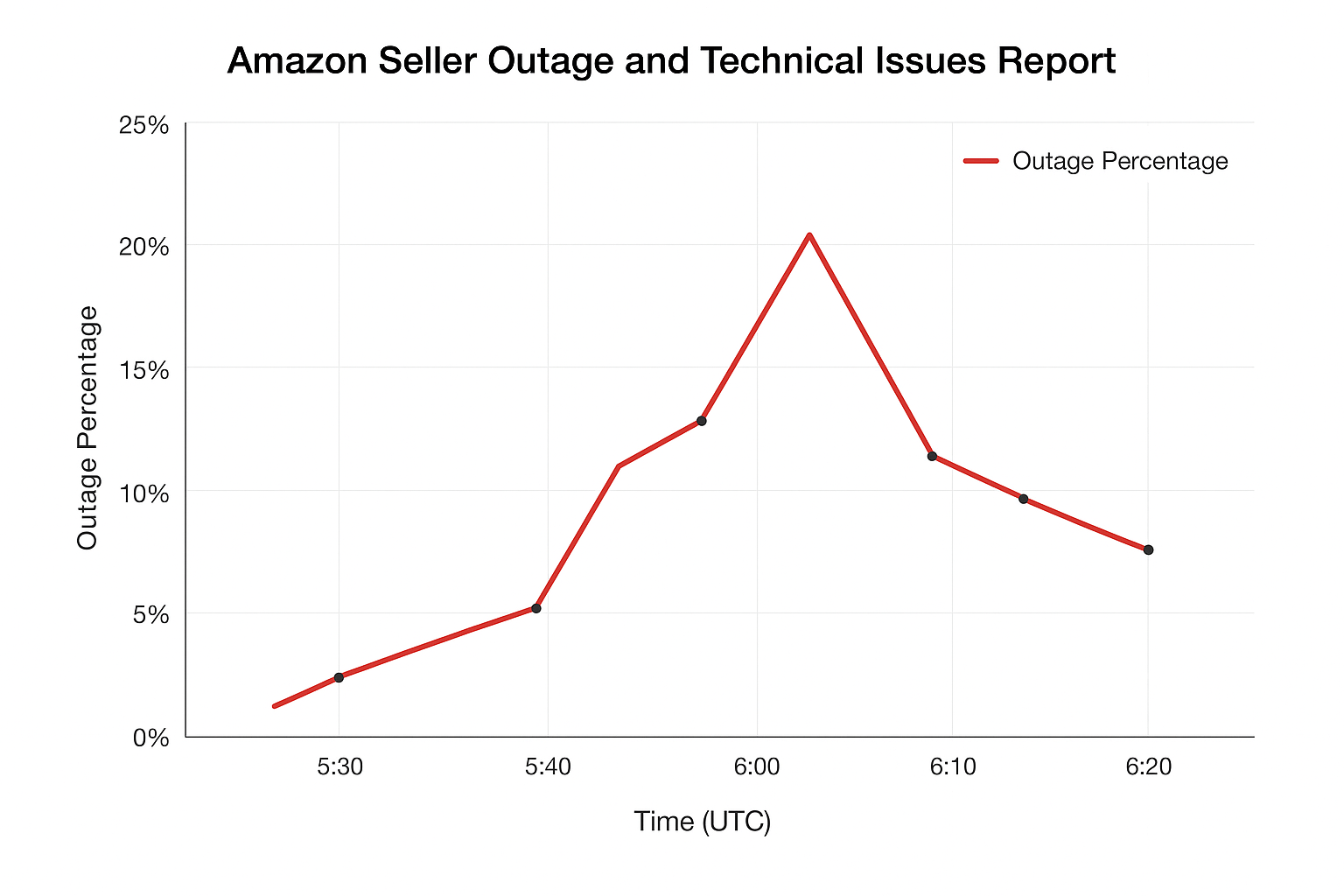Amazon UPC Barcodes: What Sellers Must Know to Stay Compliant
Amazon UPC Barcodes
Table of Contents:
- Introduction
- What Are UPC Codes for Amazon Sellers?
- Why Amazon Requires UPC Codes?
- UPC vs EAN vs ISBN: Key Differences
- How UPC Codes Work on Amazon?
- Risks of Buying Fake or Cheap UPC Codes
- Amazon’s GS1 Requirement Explained
- Step-by-Step Guide: Adding UPC Codes to Amazon Listing
- Best Practices for UPC Code Management
- Common Seller Mistakes with UPC Codes.
- How to Fix Invalid UPC Errors on Amazon?
- Alternatives to UPC: GTIN Exemption
- UPC Codes for Different Amazon Marketplaces (US, UK, EU, PKR context)
- Cost of UPC Codes for Amazon Sellers
- Frequently Asked Questions (FAQs)
- Conclusion
Introduction:
Amazon has become the world’s largest online marketplace, but selling successfully requires strict compliance with its rules. Among these rules, the requirement for UPC codes for Amazon sellers is one of the most critical. Whether you sell private label products, wholesale goods, or resell branded items, understanding UPCs (Universal Product Codes) ensures your listings remain active, discoverable, and compliant.
What Are UPC Codes for Amazon Sellers?
A UPC (Universal Product Code) is a unique 12-digit number assigned to a product. Each code is paired with a barcode that can be scanned at checkout counters or warehouses. For Amazon sellers, UPCs act as digital fingerprints for products, helping Amazon identify, categorize, and track items across millions of listings.
Example:
- A shampoo bottle will have one UPC.
- A pack of two shampoos (bundle) must have a different UPC.
- A different scent or size of shampoo also requires a unique UPC.
Thus, UPCs prevent duplication and ensure accurate product identification.
Why Amazon Requires UPC Codes?
Amazon enforces UPCs for three primary reasons:
- Catalog Integrity – To prevent duplicate or misleading listings.
- Brand Protection – Ensures genuine products can be identified correctly.
- Consumer Experience – Allows customers to find authentic items easily.
Without UPCs, Amazon’s catalog would be full of duplicates, counterfeits, and mismatched products.

UPC vs EAN vs ISBN:
Key Difference:
- UPC (Universal Product Code): 12 digits, common in US & Canada.
- EAN (European Article Number): 13 digits, used in Europe.
- ISBN (International Standard Book Number): For books, typically 10 or 13 digits.
Amazon accepts all these codes depending on region and product type.
How UPC Codes Work on Amazon?
When you create a new listing, Amazon requires a unique product identifier. Sellers enter the UPC, and Amazon checks it against GS1’s official database. If the UPC matches your brand name in GS1 records, your product is approved.
If not, Amazon may flag the UPC as invalid.
Risks of Buying Fake or Cheap UPC Codes:
- Your listings may be removed.
- Brand registry applications may be rejected.
- Amazon account could be suspended for non-compliance.
Amazon’s GS1 Requirement Explained:
This means:
- Always purchase directly from GS1.
- Avoid resellers, even if they are cheaper.
Step-by-Step Guide:
Adding UPC Codes to Amazon Listings
- Log into Seller Central.
- Go to Inventory > Add a Product.
- Select Create a new listing.
- Enter product details (title, brand, category).
- In the Product ID field, select UPC and enter your code.
- Upload product images and description.
- Save and publish listing.
Best Practices for UPC Code Management:
- Use different UPCs for variations (color, size, pack).
- Keep a UPC master sheet for tracking.
- Don’t recycle codes across unrelated products.
For bundles, assign unique UPCs separate from single items.
| Section | Details | Tips for Sellers |
|---|---|---|
| What is a UPC Barcode? | Universal Product Code (UPC) is a 12-digit code that identifies your product uniquely. | Always use a legitimate UPC registered with GS1. |
| Why Amazon Requires UPCs | Ensures product authenticity and accurate inventory tracking. | Avoid third-party or cheap UPCs; Amazon may suspend your account. |
| Buying UPCs for Amazon Sellers | Purchase directly from GS1 or authorized resellers. | Keep proof of purchase for Amazon verification. |
| Types of UPC Codes | Standard UPC-A, UPC-E (compressed) | Most products use UPC-A; UPC-E is for small items. |
| UPC Compliance Rules | Unique code per product variation (size, color). | Never reuse UPCs across different products. |
| Common Mistakes to Avoid | Using generic or resold UPCs. | Double-check your UPC before listing; incorrect UPCs can block your listing. |
| Cost Consideration | GS1 charges an initial fee + yearly renewal (varies by country). | Budget for authentic UPCs (PKR ~5000 in Pakistan). |
| Updating or Correcting UPCs | Changes require contacting Amazon support. | Keep UPC documentation ready; avoid removing UPC from listings. |
Common Seller Mistakes with UPC Codes:
- Using the same UPC across different products.
- Buying from unofficial resellers.
- Forgetting to update UPCs when creating bundles.
- Misunderstanding that UPC ≠ SKU (internal inventory number).
How to Fix Invalid UPC Errors on Amazon?
Double-check UPC in GS1 database:
- Contact Amazon Seller Support with proof of GS1 ownership.
- Apply for GTIN exemption if selling handmade or private label items.
Alternatives to UPC: GTIN Exemption
Amazon allows GTIN exemption if:
- You sell handmade goods.
- You sell products without barcodes.
- Your category is eligible (e.g., custom clothing).
But exemption approval is case-specific.
UPC Codes for Different Amazon Marketplaces:
- Amazon US: Requires UPC-A.
- Amazon UK/EU: EAN-13 preferred.
- Amazon PK (Pakistan sellers): Must use UPC-A or EAN depending on export region.
Example: A seller in Pakistan exporting textile products to the US must register UPC-A with GS1 US.
Cost of UPC Codes for Amazon Sellers:
- GS1 US (2025 pricing):
- 1 UPC = $30 (one-time) + $0 renewal
- Bulk packages (10, 100, 1000 UPCs) range from $250 to $2,500/year
- For sellers in Pakistan (PKR context):
- Approx. PKR 5,000 per UPC (conversion of $30).
Can I use the same UPC for multiple products?
Do all Amazon products need UPCs?
Can I buy UPC codes from eBay or cheap sites?
What if my UPC is already in use by another seller?
Conclusion:
UPC codes are not just numbers—they are the foundation of Amazon’s product catalog. Using genuine UPC codes for Amazon sellers ensures compliance, protects your brand, and helps customers trust your products.
- Always remember:
- Buy from GS1.
- Assign unique UPCs for each variation.
Avoid shortcuts like cheap resellers.
By following these best practices, you secure your Amazon business against suspension, improve visibility, and build long-term success.
Recent Posts
- All Post
- Amazon Compliance
- Amazon PPC
- Amazon Tools
- Full Account Management Services
- Guide
- Guide 2025
- News
- PPC Services
- Prime day
- Stories
- Team Memebers
- Top Agencies
- Top PPC tools



Get a Quick Solution
Need help fast? Our expert team is here to provide you with efficient and reliable solutions tailored to your needs. Don’t wait—reach out today!
Categories
Subscribe for Growth Tips, Seller Hacks & eCom Wins



